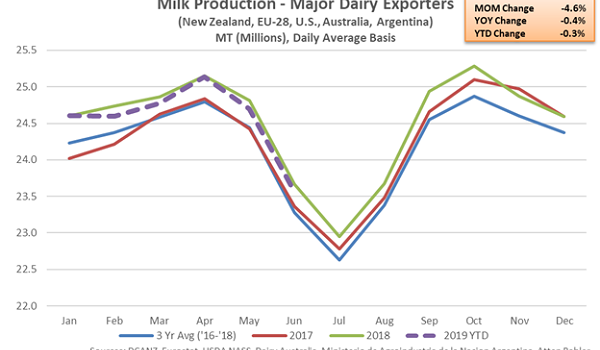
Global Milk Production Update – Aug ’19
Combined milk production within the major dairy exporting regions of New Zealand, the EU-28, the U.S., Australia and Argentina remained lower on a YOY basis during Jun ’19, finishing down 0.4%. The aforementioned regions combined to account for nearly 90% of global butter, cheese, whole milk powder and nonfat dry milk export volumes throughout 2018.
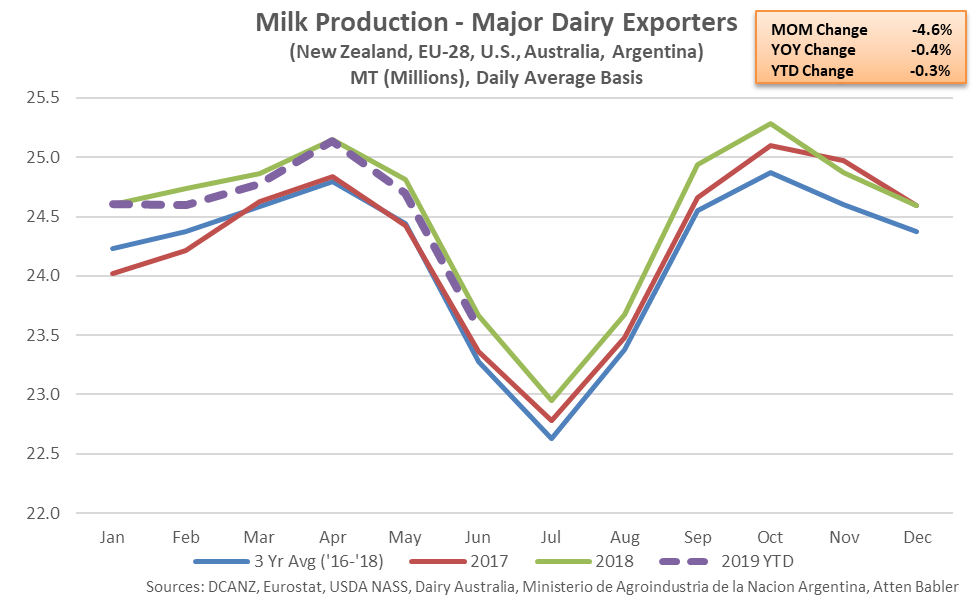 Combined milk production growth rates experienced throughout the major dairy exporting regions decelerated over much of 2018 but remained positive until Nov ’18, when production volumes declined on a YOY basis for the first time in the past 22 months. The Jun ’19 YOY decline in combined milk production experienced throughout the major dairy exporting regions was the fifth experienced in a row while 12-month rolling average production growth rates declined to a 23 month low.
Combined milk production growth rates experienced throughout the major dairy exporting regions decelerated over much of 2018 but remained positive until Nov ’18, when production volumes declined on a YOY basis for the first time in the past 22 months. The Jun ’19 YOY decline in combined milk production experienced throughout the major dairy exporting regions was the fifth experienced in a row while 12-month rolling average production growth rates declined to a 23 month low.
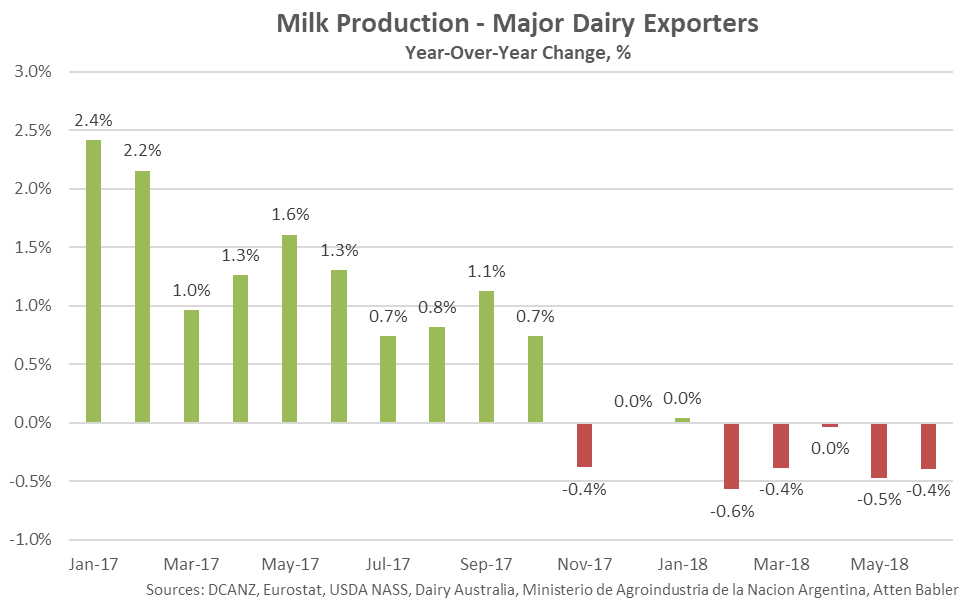 Jun ’19 YOY declines in milk production on a percentage basis were led by Australia (-7.4%), followed by Argentina (-3.1%), the U.S. (-0.2%) and the EU-28 (-0.2%). The declines in milk production volumes more than offset a 14.1% YOY increase in New Zealand milk production volumes experienced throughout the month. New Zealand milk production volumes declined to a 12 month low seasonal level throughout the month of June, with June milk production volumes accounting for less than one percent of annual figures, historically. The EU-28 produces significantly more milk than the other dairy exporting regions, accounting for over half of the combined production within the five exporting regions during Jun ’19.
Jun ’19 YOY declines in milk production on a percentage basis were led by Australia (-7.4%), followed by Argentina (-3.1%), the U.S. (-0.2%) and the EU-28 (-0.2%). The declines in milk production volumes more than offset a 14.1% YOY increase in New Zealand milk production volumes experienced throughout the month. New Zealand milk production volumes declined to a 12 month low seasonal level throughout the month of June, with June milk production volumes accounting for less than one percent of annual figures, historically. The EU-28 produces significantly more milk than the other dairy exporting regions, accounting for over half of the combined production within the five exporting regions during Jun ’19.
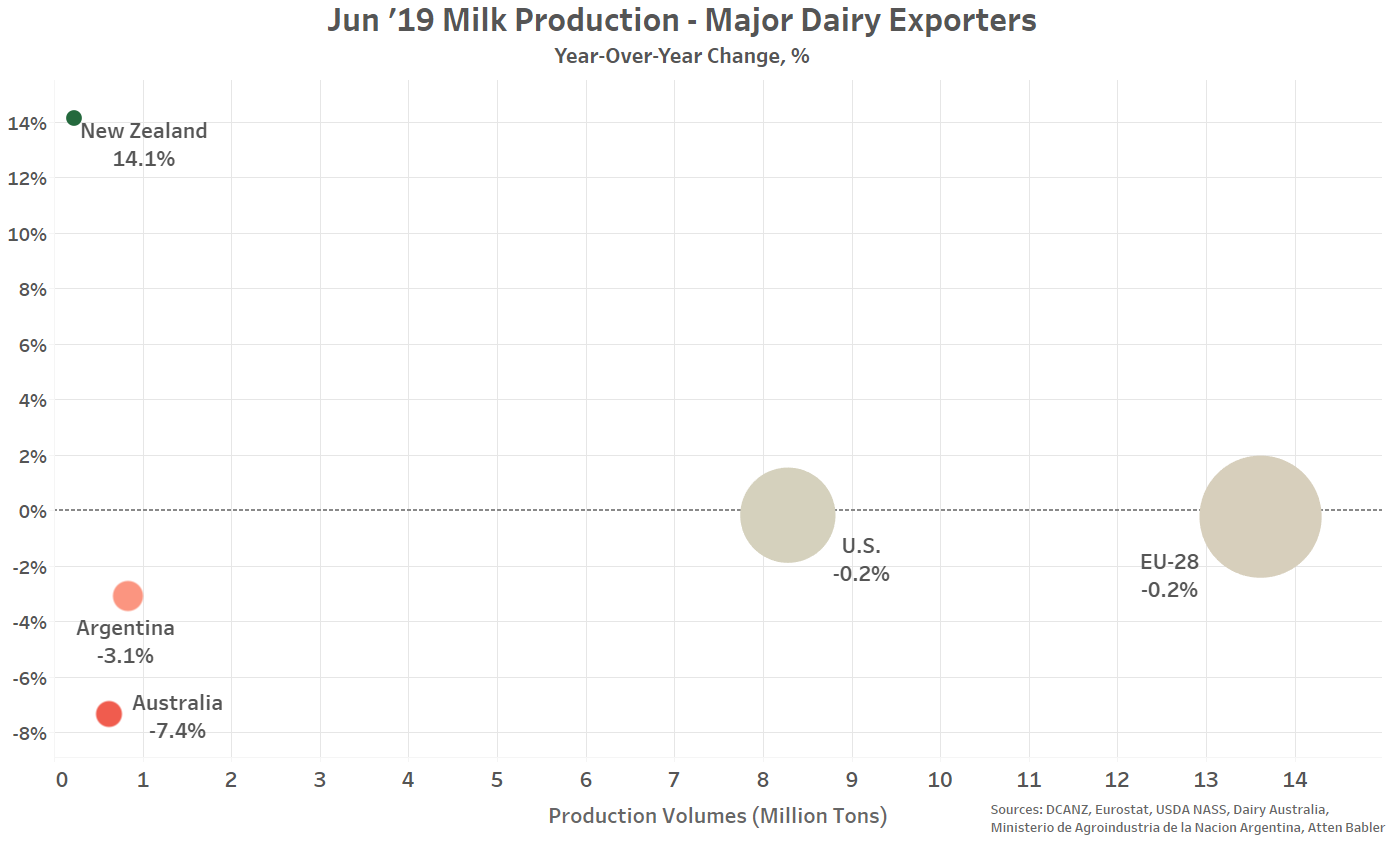 Excluding the U.S., milk production within the major dairy exporting regions declined by 0.5% on a YOY basis throughout the month of June, finishing below the growth rate exhibited within the U.S. for the seventh time in the past eight months.
Excluding the U.S., milk production within the major dairy exporting regions declined by 0.5% on a YOY basis throughout the month of June, finishing below the growth rate exhibited within the U.S. for the seventh time in the past eight months.
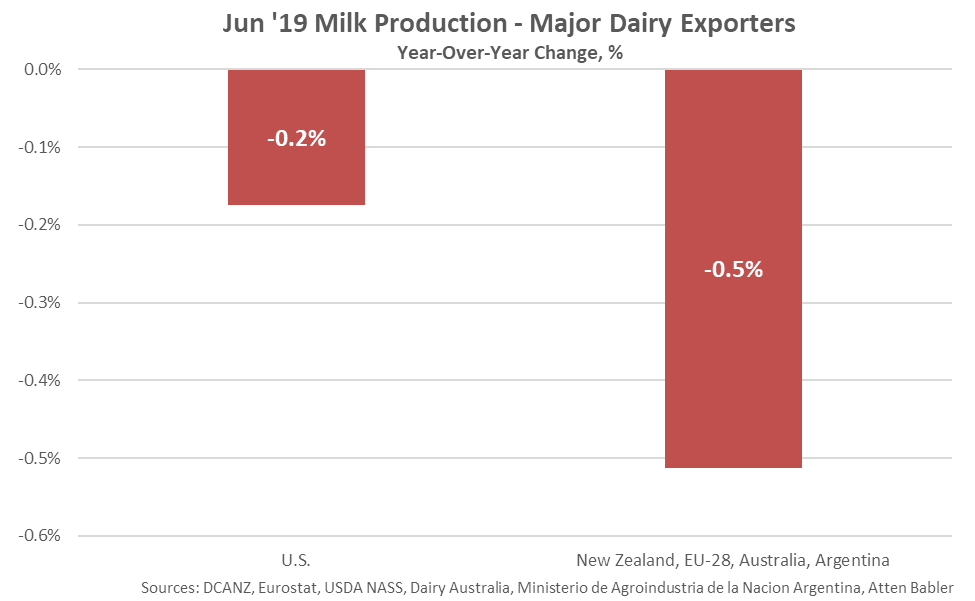 More recent milk production figures for the month of July have been reported for the U.S., New Zealand and Argentina. Milk production finished flat on a YOY basis within the U.S. and Argentina throughout Jul ’19, while production finished higher throughout New Zealand but remained near seasonal low levels.
More recent milk production figures for the month of July have been reported for the U.S., New Zealand and Argentina. Milk production finished flat on a YOY basis within the U.S. and Argentina throughout Jul ’19, while production finished higher throughout New Zealand but remained near seasonal low levels.
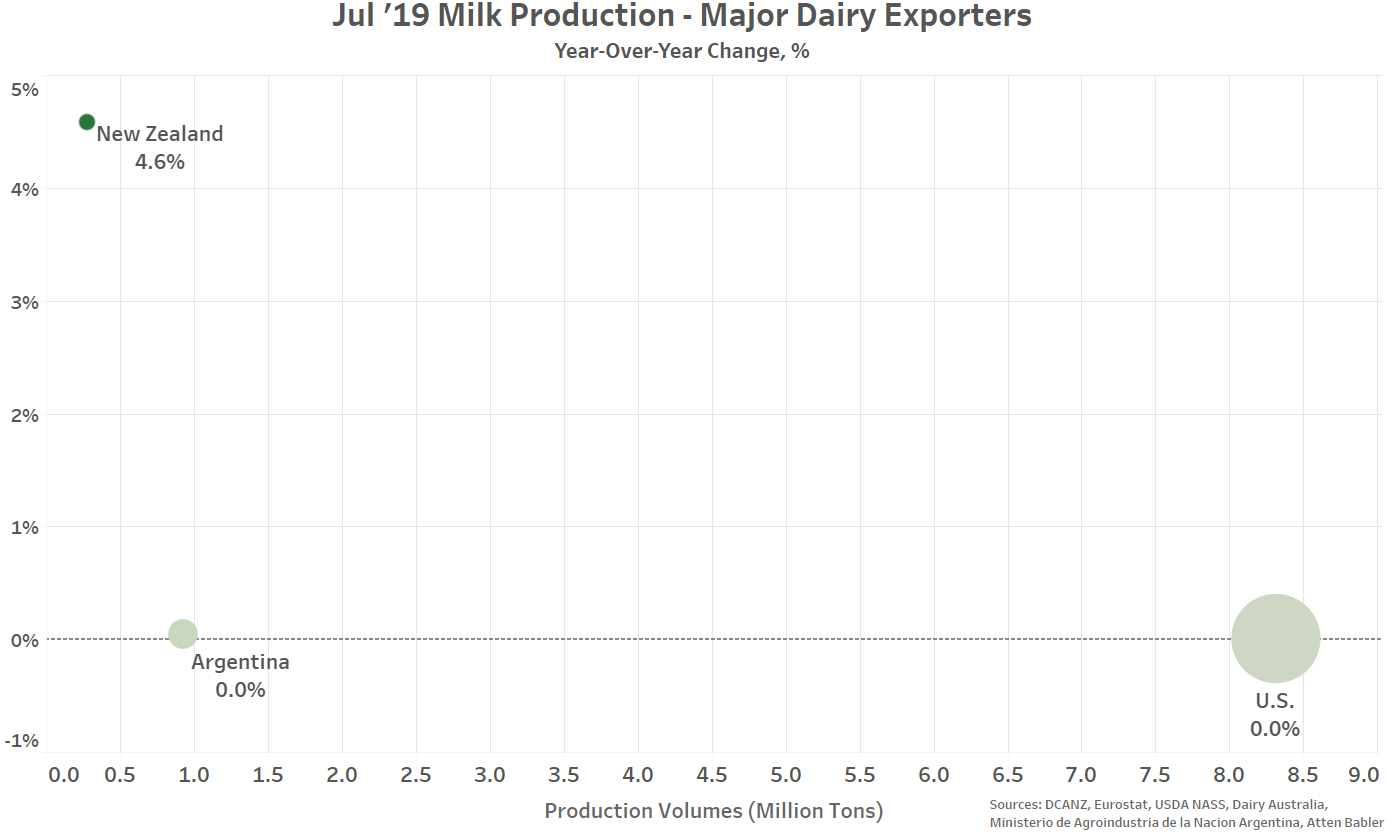
 Combined milk production growth rates experienced throughout the major dairy exporting regions decelerated over much of 2018 but remained positive until Nov ’18, when production volumes declined on a YOY basis for the first time in the past 22 months. The Jun ’19 YOY decline in combined milk production experienced throughout the major dairy exporting regions was the fifth experienced in a row while 12-month rolling average production growth rates declined to a 23 month low.
Combined milk production growth rates experienced throughout the major dairy exporting regions decelerated over much of 2018 but remained positive until Nov ’18, when production volumes declined on a YOY basis for the first time in the past 22 months. The Jun ’19 YOY decline in combined milk production experienced throughout the major dairy exporting regions was the fifth experienced in a row while 12-month rolling average production growth rates declined to a 23 month low.
 Jun ’19 YOY declines in milk production on a percentage basis were led by Australia (-7.4%), followed by Argentina (-3.1%), the U.S. (-0.2%) and the EU-28 (-0.2%). The declines in milk production volumes more than offset a 14.1% YOY increase in New Zealand milk production volumes experienced throughout the month. New Zealand milk production volumes declined to a 12 month low seasonal level throughout the month of June, with June milk production volumes accounting for less than one percent of annual figures, historically. The EU-28 produces significantly more milk than the other dairy exporting regions, accounting for over half of the combined production within the five exporting regions during Jun ’19.
Jun ’19 YOY declines in milk production on a percentage basis were led by Australia (-7.4%), followed by Argentina (-3.1%), the U.S. (-0.2%) and the EU-28 (-0.2%). The declines in milk production volumes more than offset a 14.1% YOY increase in New Zealand milk production volumes experienced throughout the month. New Zealand milk production volumes declined to a 12 month low seasonal level throughout the month of June, with June milk production volumes accounting for less than one percent of annual figures, historically. The EU-28 produces significantly more milk than the other dairy exporting regions, accounting for over half of the combined production within the five exporting regions during Jun ’19.
 Excluding the U.S., milk production within the major dairy exporting regions declined by 0.5% on a YOY basis throughout the month of June, finishing below the growth rate exhibited within the U.S. for the seventh time in the past eight months.
Excluding the U.S., milk production within the major dairy exporting regions declined by 0.5% on a YOY basis throughout the month of June, finishing below the growth rate exhibited within the U.S. for the seventh time in the past eight months.
 More recent milk production figures for the month of July have been reported for the U.S., New Zealand and Argentina. Milk production finished flat on a YOY basis within the U.S. and Argentina throughout Jul ’19, while production finished higher throughout New Zealand but remained near seasonal low levels.
More recent milk production figures for the month of July have been reported for the U.S., New Zealand and Argentina. Milk production finished flat on a YOY basis within the U.S. and Argentina throughout Jul ’19, while production finished higher throughout New Zealand but remained near seasonal low levels.
